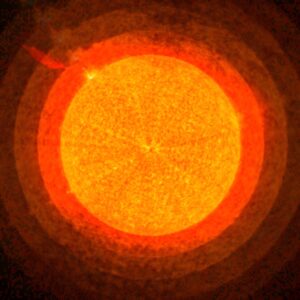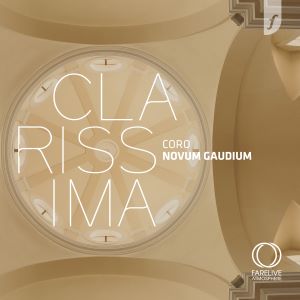Marek Pospieszalski, gra piosenki, które śpiewał Frank Sinatra
Marek Pospieszalski MP001, Medium: Compact Disc. Date of release: 15th March 2017
A parcel with Marek Pospieszalski's album was sent from my home city of Cracow. It is modest, released in a digipack without any booklet, with minimum lettering imprinted on the CD and is – let me tell you already now—incredibly bold and exceptional when it comes to performance and instrumental interpretations of songs that were sung by Frank Sinatra. A modest portfolio of the record label does not show (let me foresee the future again) what an outstanding album it is, either.
Marek Pospieszalski is a musician and an arranger who mostly plays the saxophone, but also the clarinet, flutes and keyboard instruments. Although the name is known—Marek is from THE Pospieszalscy family—the combination of the name and the surname is not as famous as his brother's—Jan. Anyway, you know how Marek plays music, e.g. from the albums of bands such as: Śmierć Kliniczna, Maanam , Fisz/Emade, Zakopower, Armia, Tie Break and Graal, as well as Stanisław Sojka's, Anna Maria Jopek's and Janusz Radek's solo projects. Marek also played in the Voo Voo band and cooperates with the YeShe and 2Tm23 bands. Recently, he has been collaborating with Wojtek Mazolewski's band.
When it comes to the reviewed CD, it contains Marek's own project in which he is the leader. Marek invited his "brother in music"—Maks Mucha—one of the most popular bass players of the young generation in Poland (Maks plays with, among others, Sławek Jaskułke), as well as leading young musicians from Berlin to the band—the pianist Elias Stemeseder (known for, among others, his cooperation with John Zorn) and the drummer Max Andrzejewski.
We can read in company materials that:
After many years of gaining experience and gathering inspirations from other musicians, Marek Pospieszalski presents his own project, his own vision of music that takes from the whole goodness of jazz and improvised music, but also from all other creative genres. It mostly contains a huge dose of band music that manifests itself through, among others, experiments with textures and multi-faceted narration. A melodic base is contrasted with sonorism, all without batting an eyelid and hiding behind the mask of a cabaret.
It is frank, intensive, bold and serious music.
RECORDING
The recordings were released by the artist himself on a Compact Disc. This is probably the reason why there is no record label name on it. Laser markings next to the opening only have the symbol "MMP01". The album is incredibly modest and one can see that the aim was to save money: it is a thin digipack without a booklet. The material on the CD is already two years old. It was recorded in one day! It took place in Lubrza, at ResPublica Studios, and Łukasz Olejniczak was the sound engineer. Jacek Gładkowski took care of mixing and mastering.
SOUND
It is a perfect album in every respect—e.g. musically, as these are outstanding musicians with exceptional material that they are not afraid of, but rather explore it to find what they are interested in —often virtuoso, but always interesting solutions. Music known from Sinatra's albums comes to life in a completely different way. It is sometimes darker and sometimes "swings" more, but it is always focused on searching.
The band was recorded in a way that gives the impression that it plays in a real, rather large room. If the saxophone plays the leading role, like for example in the album's opening track *My Way**, it is closer, but usually heard from a little distance, similarly to other instruments including the percussion. It is similar to the way of recording jazz albums from the 1940s and 1950s, when musicians played to one microphone. Here it is rather a procedure which consists in adding appropriate reverberations, but the effect is very nice.
The resolution is incredible, rarely found in contemporary recordings (not in Poland but elsewhere in the world). To compare, let us say that albums released within an incredibly interesting series Smoke Session Records contain less information and are less credible sonically than Marek Pospieszalski's album. Despite the distance from the front line and the location of the band on a large stage, one does not get an impression of "thinness" and a lack of mass—it is full, dense sound.
Of course, this is not "tangible" sound in the sense that it does not "come forward" to us, crossing the line which connects the speakers. However, we do not need that at all, as we perceive these recordings very physiologically, recognizing their credibility under our skin. Great music and outstanding sound—this is one of those albums that I would like to get in the form of an expensive version straight from Japan, on a Platinum SHM-CD, in a packaging of the 7 inch mini LP type, or—even better—recorded on a Master CD-R. It would be a jewel in my collection.
A well-deserved double High Fidelity award: BIG RED Button for the recording quality and RED Fingerprint for music.
Sound quality: REFERENCE









































